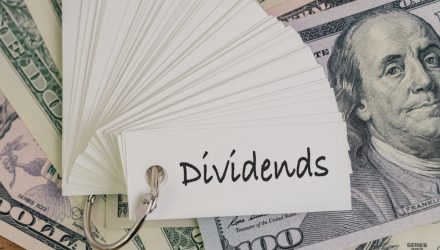With eight and a half months in the books in 2022, some themes as they pertain to equities are now abundantly clear. One of those is the point that dividend stocks and the related exchange traded funds, broadly speaking, are easily topping the broader market.
While high-dividend strategies are leading, investors should not eschew ETFs that emphasize quality and payout growth. That group includes the SmartETFs Dividend Builder ETF (DIVS). In fact, DIVS is highly relevant today, particularly for younger investors with the luxury of time, because the ETF is suitable for dividend reinvestment – an all-weather strategy to be sure.
“Those with a long-time horizon, for example, often reinvest their dividends as a means of boosting returns. In fact, $10,000 in a hypothetical investment that tracked the S&P 500® Index fund in 1991 would have swelled to more than $211,000 by the end of 2020 had dividends been reinvested, but only to $114,000 had dividends not been reinvested,” according to Charles Schwab research.
Indeed, high-dividend strategies can be seductive and there’s no getting around the point that the related ETFs are outperforming this year. However, owing to dependability and resiliency, payout growth is potent when paired with dividend reinvesting and that highlights structural advantages that come along with DIVS.
DIVS is also pertinent today due to high inflation. Historical data confirm that over time dividend growth is one of the best avenues for beating inflation.
“When inflation is high, it erodes your purchasing power, meaning your dividends must be greater to keep pace with rising prices. The opposite is also true: A low-inflation environment, like the current one, puts less pressure on income. Consequently, you want your dividends to regularly exceed, or at least keep pace with, the rate of inflation—something companies in the S&P 500 has been doing for the better part of five years,” added Schwab.
Another advantage of DIVS is that, as an actively managed fund, it’s able to better implement standards and capitalize on favorable traits than some index-based rivals. That’s relevant because, in the world of dividends, standards are meaningful.
“Consistently increasing dividends is generally an indicator of healthy corporate fiscal policy,” concluded Schwab. “When companies exhibit a low ratio of dividends to earnings, it suggests they’re retaining some earnings, making it less likely they’ll reduce dividends in the future.”
For more news, information, and strategy, visit the Dividend Channel.
The opinions and forecasts expressed herein are solely those of Tom Lydon, and may not actually come to pass. Information on this site should not be used or construed as an offer to sell, a solicitation of an offer to buy, or a recommendation for any product.

